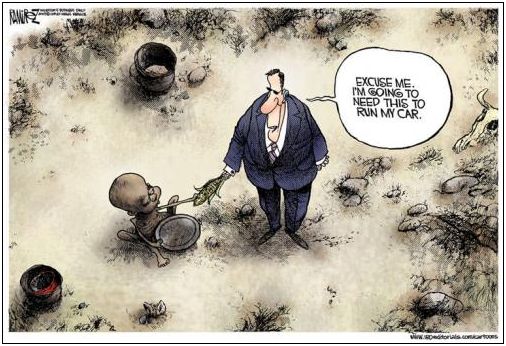|
 Updated
November 18, 2009 Updated
November 18, 2009
You
just know that something is astray when Afghan poppy growers begin to switch
from opium to wheat (The Independent). And this is exactly what they are
doing!
According
to an official UN report, opium production in Afghanistan has risen
dramatically since the downfall of the Taliban in 2001. UNODC data shows
more opium poppy cultivation in each of the past four growing seasons
(2004-2007), than in any one year during Taliban rule. More land is now used
for opium in Afghanistan, than for coca cultivation in Latin America. In 2007,
93% of the opiates on the world market originated in Afghanistan. This is no
accident. According to Afghan
sources, president Karzai used to work for the CIA and is the Opium
“Godfather” of Afghanistan today.
The aim of the US bases in Afghanistan is to be able to strike at the two
nations (Russia and China) which represent the only combined threat in the
world today to the USA.
Russia
is a nuclear power and it holds the world’s largest treasure of natural gas
and vast reserves of oil urgently needed by China. The two powers are
increasingly converging via a new organization they created in 2001 known as
the Shanghai Cooperation Organization (SCO). That includes as well as
China and Russia, the largest Central Asia states Kazakhstan, Kyrgyzstan,
Tajikistan, and Uzbekistan.
Afghanistan has historically been the heartland for the British-Russia Great
Game, the struggle for control of Central Asia during the 19th and early
20th Centuries. British strategy then was to prevent Russia at all costs
from controlling Afghanistan and thereby threatening Britain’s imperial crown
jewel, India.
Afghanistan lies along a proposed oil pipeline route from the Caspian Sea oil
fields to the Indian Ocean, where the US oil company, Unocal, along
with Enron and Cheney’s Halliburton, had been in negotiations
for exclusive pipeline rights to bring natural gas from Turkmenistan across
Afghanistan and Pakistan to Enron’s huge natural gas power plant at Dabhol
near Mumbai.
The problem
for the US elites around Wall Street and Washington is the fact that they are
now in the deepest financial crisis in their history. It is now clear to the
entire world this Elite [and Globalism] is fighting for self-survival. This is
demonstrated by the arbitrary exercise of power by non
elected officials such as Treasury Secretaries Henry Paulson and now Tim
Geithner, stealing trillion dollar sums from taxpayers without their consent
in order to bailout the bankrupt biggest Wall Street banks, banks deemed “Too
Big To Fail” .
Just like Britain and the USSR before it collapsed the
USA finds itself in a similar situation where the financial means (each
Private costs $ 750,000 per year) start to dwindle away...
_____________
According to
the World Bank, just over 1 billion people live on one dollar or less per day.
People in the poorest countries in the world spend 80% of their income on
food. Chinese consumers spend 28% of their income on food. In India it is 33%.
Belgium, France and the Netherlands spent about 14 % of their income on food.
In promoting
bio-fuel as an ultimate effort to break the fuel shortage, politicians
have opted for an acceleration is the price of food commodities.
According to a
recent UN report, it takes 232 kg of corn to fill an average 50 liter car tank
with ethanol - enough corn to feed a child for an entire year. It is estimated
that almost 20% of total US corn production will go towards ethanol this year
and the number is set to rise to 45% by 2015. Hence, in promoting bio-fuel as
an ultimate effort to break the liquid fuel shortage, politicians are
accelerating the price of all food commodities that are already – as a result
of the monetary inflation – rising exponentially.
According to Goldman
Sachs, the cost of ethanol from corn is now over $80 per barrel, it is about
$145 from wheat and over $230 from soybeans. Only Sugar (grown and used in
Brazil and South Africa) cane ends up costing $35 per barrel. Conclusion,
politicians must be aware that the price of crude oil will never fall back
under the $ 80 per barrel. This has huge implications as oil and natural gas
are used to manufacture a broad range of products: from fertilizers to
plastics.

Not only is the
demand rising but the supply and the cost (fertilizers, energy, etc.) to grow
Food commodities is dramatically increasing. Sometimes the price of
fertilizers is that high that farmers cannot afford (Africa) to buy them.
Inflation is there to
stay and though a financial impact of Hedge funds and other speculators cannot
be denied, all Food commodities are in a secular UPTREND and will remain there
for the years to come. Sooner or later we shall see the word Hyperinflation
rather than the word Inflation in the headlines of the Media.
>back to newsletters
Goldonomic, Florida, USA -
 +1
(772)-905-2491
+1
(772)-905-2491 |